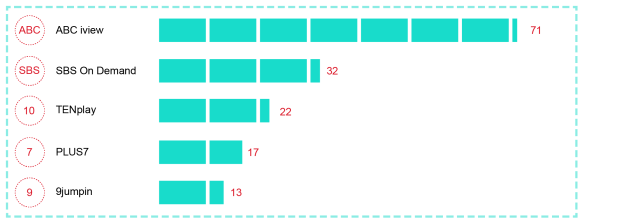
Source: mashable.com
For this post, I’ll be analysing a report from the Pew Research Center, entitled “8 Key Takeaways about Social Media and News”. As the title suggests, this is a brief and to-the-point report, which observes eight trends in the relationship between News and Social Media, based on research conducted by the Pew Research Center. The Research Center is a reputable “fact tank that informs the public about the issues, attitudes and trends shaping America and the world”, and conducts thorough research into many areas, including media.
The report is quite easy-to-read, due to the use of graphics, accessible language (avoiding excessive jargon) and brevity. Its audience would include academics, industry professionals, media students (me!) and other interested parties. Its simplicity means it could be useful for the average person who has an interest in the news and social media, as well as more serious researchers.
The information presented is objective, setting out to inform rather than persuade. While it brings up some much-debated news issues (US gun laws and same-sex marriage), it does not comment on the issues themselves, rather how they were discussed and reported in social media. The use of third-person contributes to this sense of objectivity.
All the data presented is from research conducted by the Pew Research Centre – hardly surprising given the organisation’s name and function. However, this could potentially have the opportunity for bias – for example, if the organisation had an agenda they could subtly use it in the way they conduct all their research. But I doubt that is the case, and the organisation’s reputability would reinforce this.
The data used as proof to the trends is largely qualitative, which also contributes to the report’s brevity and clarity.

One of the graphics used in the report – clear and simple.
As the title suggests, the report is split into 8 sections, each containing some text and a graph of some kind. This allows the authors to communicate the trends in a clear, authoritative and effective way. The list of trends is not in any recognisable order, apart from the first being the most general, “News has a place in social media – but on some sites more than others”, before the report proceeds to look at some social networking sites specifically and the specific activities of online news consumers.
I personally found the report very informative and useful, particularly as my group research project is going to look at the ways media students access news. I’m particularly interested to see how much social media plays a part in students’ consumption of the news, and the trends presented so clearly in this report will I think form an important part of our literature review. In comparison to the other research and articles I have so far come across, this has been the most useful and one of the most accessible, and I am looking forward to seeing how the news consumption habits of Wollongong Media students might compare to that of the general American public, as surveyed by the Pew Research Center.

Another of the graphics used – the percent of US adults who use each social networking site and the percentage of those who get news from them.


